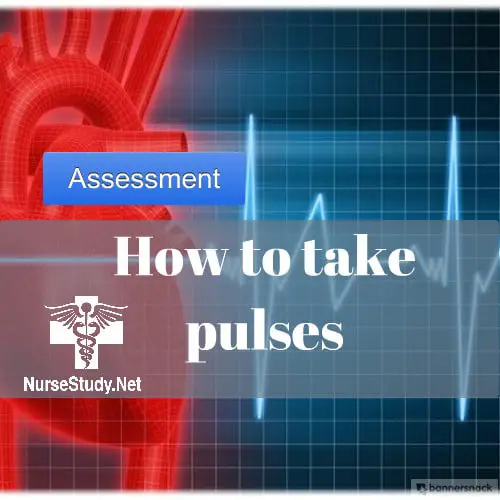How to check pulses
This article will give a brief synopsis on how to take your pulse or your patients pulse. The pulse is the heart rate, or how many times your heart beats per minute (BPM). While pulses rates differ from person to person, it is also important to note that the pulse in the same person can become higher and lower at any given time depending on the situation that the person is in when the nurse takes the pulse. In general, the pulse is lower at rest and increases when the body is exercising or stressed.
One of the skills that a nursing student, paramedic student, EMT, LVN, LPN, and CNA must develop is how to take a pulse and being able to understand what the numbers mean.
Normal Pulse Rate:
- Neonate pulse rate : 140 BPM
- Toddler pulse rate : 120 BPM
- School age pulse rate: 100 BPM
- Adult pulse rate: 60-100 BPM
Of note – pulse rates in women tend to be slightly higher than men.
Please see the videos included in this post for different procedures in obtaining pulses.
http://youtu.be/E-LKF_pUWDA
Apical Pulse
An apical pulse is the heartbeat heard through a stethoscope place on the chest wall. The apical pulse is the most accurate noninvasive way to assess cardiac function. When assessing the apical pulse rate, it is important that you can listen to the heart sounds clearly. The stethoscope must be placed at the apex of the heart. If the apical rate is regular, you can usually determine the rate in 30 seconds then multiply that number by 2, this will give you the bpm. However, if the apical rate is irregular, it is best to listen for the full minute to get the most accurate heart rate.
http://youtu.be/nHBKZbAuttA
Although peripheral pulses can be assessed in a variety of landmarks on the body, the radial pulse is not only the easiest but the most accessible. If you are finding it difficult to assess a pulse, try to use a Doppler to confirm the absence or presence of the pulse. The absence of a pulse is a medical emergency. Please contact the physician immediately to report an absence of pulse in any extremity.


